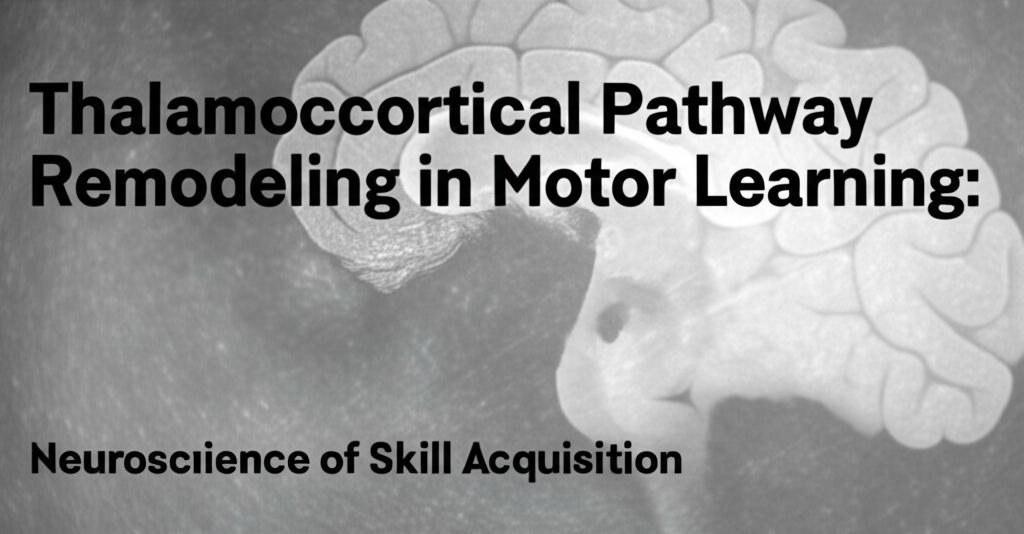Recent advancements in neuroscience are shedding new light on how the brain learns and refines motor skills, with a particular focus on the dynamic relationship between the thalamus and the motor cortex. This pathway, known as the thalamocortical pathway, acts as a crucial communication bridge and undergoes significant remodeling during the process of acquiring new movements.
Traditionally, the primary motor cortex (M1) was considered the main hub for sending out movement signals during learning. However, the motor thalamus, a relay station deep within the brain, is now understood to play a pivotal role in influencing M1 during motor skill acquisition. Groundbreaking research, employing sophisticated imaging techniques and novel data analysis in animal models, has identified the thalamocortical pathway as a key area modified during learning.
This modification isn't just about adjusting activity levels; it involves a physical sculpting of the circuit's wiring. As a new skill is learned, the interaction between the thalamus and cortex undergoes a focused reorganization. The thalamus becomes instrumental in activating specific neurons in the M1 that encode the learned movement, while simultaneously inhibiting neurons not involved in that particular skill. This process refines the "conversation" between these two brain regions, making communication faster, stronger, and more precise.
Studies have shown that as expertise in a motor task develops, the motor thalamus becomes a principal input for encoding the learned movements. This refined thalamic influence is functionally significant. Temporarily inactivating thalamic inputs to M1 in expert subjects impairs their ability to perform the learned motor tasks, highlighting the indispensable role of this pathway in maintaining skilled movement.
The process appears to be twofold: motor learning first induces plasticity within M1 circuits and then sculpts the thalamic inputs that drive these circuits. This leads to a sharpening of the motor command signal, likely enhancing the fidelity of movement execution. At a cellular level, this involves changes in synaptic strength and potentially the formation and elimination of synaptic connections. For instance, research has observed an increased rate of formation of presynaptic structures (axonal boutons) on axons from the secondary motor cortex (M2) to M1 in the early stages of learning, and a decreased rate of elimination of boutons from the motor thalamus to M1 in later stages, suggesting stabilization of these thalamic inputs contributes to skill consolidation.
Furthermore, the plasticity in thalamocortical projections is highly specific. Studies recording from pairs of corticospinal neurons in M1 associated with different motor outputs (e.g., distal vs. proximal forelimb control) found that while thalamic input was initially balanced, skilled grasp training led to a biased activation towards neurons controlling the relevant part of the limb (the distal forelimb in this case). This suggests a highly segregated and behaviorally relevant plasticity within the thalamocortical pathway.
The implications of this research are significant. Understanding how motor learning naturally fine-tunes the thalamocortical pathway opens potential avenues for therapeutic interventions in motor disorders such as stroke, Parkinson's disease, and dystonia, which often involve disrupted motor cortical activity and aberrant thalamocortical communication. By comprehending how the brain literally rewires itself in a targeted way during skill acquisition, scientists hope to design better therapies and technologies that can work in concert with the brain's natural learning mechanisms to restore or enhance motor function.
Future research will continue to delve into the molecular signaling cascades and synaptic remodeling events that govern this thalamic input refinement. Unraveling the temporal and spatial dynamics of how the motor thalamus synchronizes its output with behaviorally relevant cortical ensembles will provide a more comprehensive understanding of how the brain encodes and executes learned behaviors at a network level.

